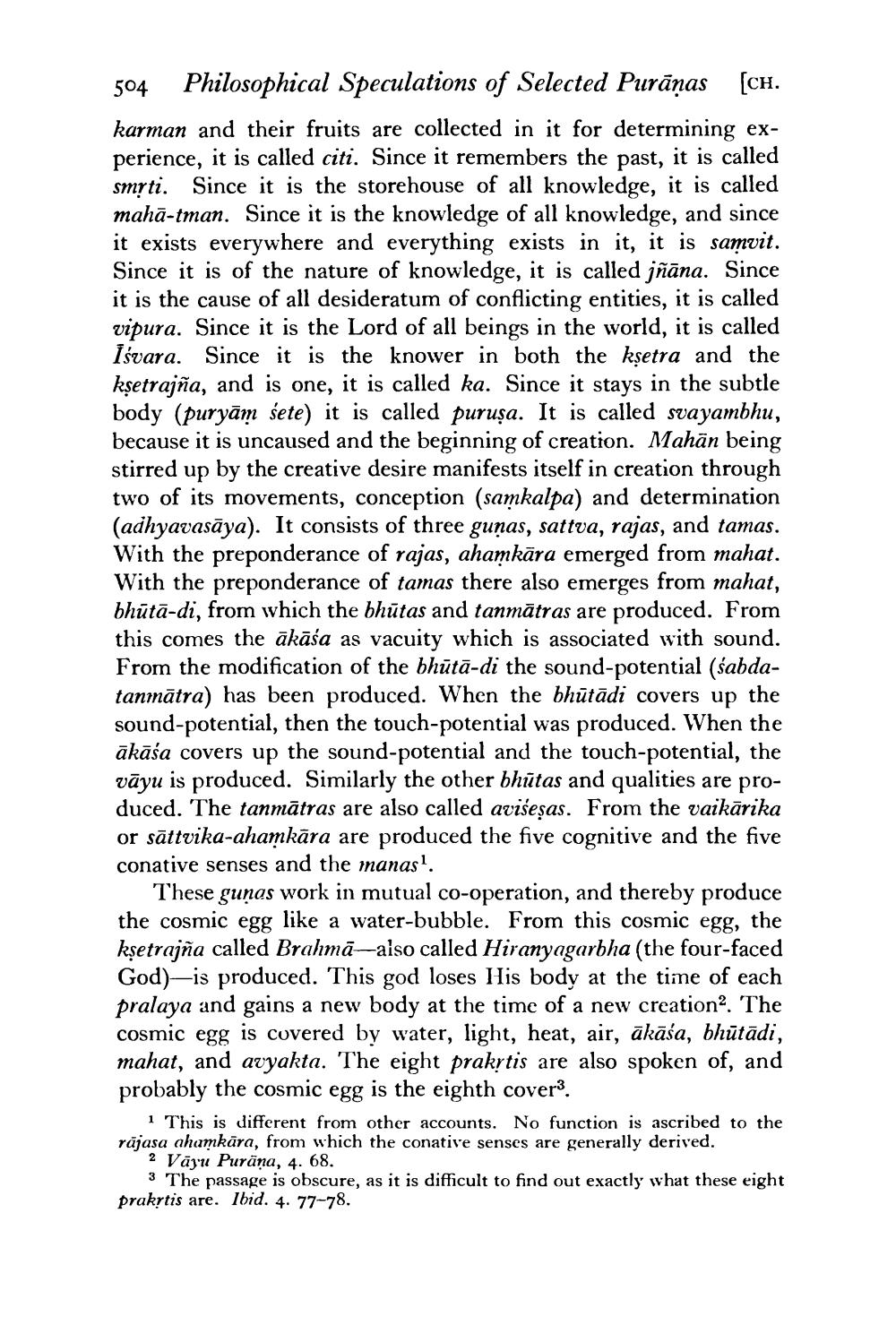________________
504
Philosophical Speculations of Selected Purānas [CH.
karman and their fruits are collected in it for determining experience, it is called citi. Since it remembers the past, it is called smrti. Since it is the storehouse of all knowledge, it is called maha-tman. Since it is the knowledge of all knowledge, and since it exists everywhere and everything exists in it, it is samvit. Since it is of the nature of knowledge, it is called jñāna. Since it is the cause of all desideratum of conflicting entities, it is called vipura. Since it is the Lord of all beings in the world, it is called Isvara. Since it is the knower in both the kṣetra and the kṣetrajña, and is one, it is called ka. Since it stays in the subtle body (puryam sete) it is called purușa. It is called svayambhu, because it is uncaused and the beginning of creation. Mahan being stirred up by the creative desire manifests itself in creation through two of its movements, conception (samkalpa) and determination (adhyavasaya). It consists of three guņas, sattva, rajas, and tamas. With the preponderance of rajas, ahamkāra emerged from mahat. With the preponderance of tamas there also emerges from mahat, bhūtā-di, from which the bhūtas and tanmātras are produced. From this comes the ākāśa as vacuity which is associated with sound. From the modification of the bhūta-di the sound-potential (sabdatanmātra) has been produced. When the bhūtādi covers up the sound-potential, then the touch-potential was produced. When the ākāśa covers up the sound-potential and the touch-potential, the vāyu is produced. Similarly the other bhūtas and qualities are produced. The tanmātras are also called aviseșas. From the vaikārika or sāttvika-ahaṇkāra are produced the five cognitive and the five conative senses and the manas1.
These gunas work in mutual co-operation, and thereby produce the cosmic egg like a water-bubble. From this cosmic egg, the kṣetrajña called Brahmā―also called Hiranyagarbha (the four-faced God) is produced. This god loses His body at the time of each pralaya and gains a new body at the time of a new creation2. The cosmic egg is covered by water, light, heat, air, ākāśa, bhūtādi, mahat, and avyakta. The eight prakṛtis are also spoken of, and probably the cosmic egg is the eighth cover3.
This is different from other accounts. No function is ascribed to the rājasa ahamkāra, from which the conative senses are generally derived.
2 Vayu Purāṇa, 4. 68.
3 The passage is obscure, as it is difficult to find out exactly what these eight prakrtis are. Ibid. 4. 77-78.




